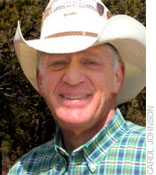UP FRONT with Jon Asher

Getting the National Hot Rod Association to admit there have been
mistakes in their operations, and that maybe changes should be made in
the way they do things is somewhat akin to getting Congress to admit
there have been ethical lapses by some of its members.
Historically, the NHRA has seldom, if ever, been receptive to ideas
that come from outsiders, and all too often, from those inside the
confines of 2035 Financial Way as well. Part of that is a result of the
corporate life and isn’t necessarily endemic to the organization. It
happens in companies of all sizes, particularly those in which, for
whatever reason, executives constantly fear for their personal future
with the firm, and often make questionable moves more designed to
protect those futures than to advance the company’s goals. It’s in
those environments where a worker bee’s suggestion will be advanced by
the boss and claimed as his own if the uber boss likes it, or will be
just as quickly abandoned by that middle manager when the uber leader
turns up his nose in distaste. The middle manager is the one likely to
say, “Well, it wasn’t my idea. That one came from So-and-So, and I
promised to present it to you. I didn’t like it either, but I did
promise.” Sure you did!
NOW IS THE TIME TO CHANGE THINGS
 Getting the National Hot Rod Association to admit there have been mistakes in their operations, and that maybe changes should be made in the way they do things is somewhat akin to getting Congress to admit there have been ethical lapses by some of its members.
Getting the National Hot Rod Association to admit there have been mistakes in their operations, and that maybe changes should be made in the way they do things is somewhat akin to getting Congress to admit there have been ethical lapses by some of its members. Historically, the NHRA has seldom, if ever, been receptive to ideas that come from outsiders, and all too often, from those inside the confines of 2035 Financial Way as well. Part of that is a result of the corporate life and isn’t necessarily endemic to the organization. It happens in companies of all sizes, particularly those in which, for whatever reason, executives constantly fear for their personal future with the firm, and often make questionable moves more designed to protect those futures than to advance the company’s goals. It’s in those environments where a worker bee’s suggestion will be advanced by the boss and claimed as his own if the uber boss likes it, or will be just as quickly abandoned by that middle manager when the uber leader turns up his nose in distaste. The middle manager is the one likely to say, “Well, it wasn’t my idea. That one came from So-and-So, and I promised to present it to you. I didn’t like it either, but I did promise.” Sure you did!
An unspoken responsibility of the NHRA is to provide as much exposure as possible for every team sponsor right along with the exposure they try to generate for their series and program sponsors. It would be extremely naïve to suggest that this responsibility includes the winery that sponsors a Super Gas entry or the service station that backs a Super Stock car. But, when it comes to the pro categories that responsibility extends from the POWERade champion’s Top Fuel backer to the tenth place finisher in Pro Stock Motorcycle.
a d v e r t i s e m e n t
Click to visit our sponsor's website

The fuel cars are ten times as dramatic on television as are the cars and bikes, and in person the noise, smells, and action of the nitro-burners far exceeds that produced by P/S and P/SM. The differences in visceral appeal of the different categories is very real. Regardless of the real or perceived popularity of each professional category, if the NHRA is going to put them out there as the cream of the drag racing milk, the association has an obligation to do everything in its power to ensure that all of the sponsors involved get their maximum bang for the buck in terms of exposure, and that exposure means more than in print or on TV. It means in front of the live audience as well, and based on races like the just-completed AC Delco Nationals in Las Vegas, that can be a significant number of audience impressions.
The NHRA has failed to live up to this responsibility when it comes to Pro Stock and Pro Stock Motorcycle, but with some innovative thinking that situation could be easily changed. The problem is that the concept I’m going to propose is far from new, and has been consistently rejected by a small faction within the NHRA that continues to be amazingly resistant to change, this despite the fact that there are a fairly significant number of executives who appear to favor it.
Seven-and-a-half years ago I wrote an editorial for RACER Magazine entitled “Pro Stock Saturday” in which I outlined the positives of having the sport’s top doorslammer class and the bikes run start to finish on Saturday. Briefly, the positives include boosting the still moribund TV ratings for the Saturday qualifying show, which fails to connect with the fans because it doesn’t include racing, but only runs for position in the following day’s eliminations. A Saturday conclusion of the two categories would also produce Sunday newspaper coverage, which is virtually every paper’s largest circulation day. As things now stand the Pro Stock and Motorcycle winners are lucky if their names and hometowns are included in the Monday story, as the bulk of the copy goes to the fuel burners.
When this idea was first circulated – and I only wish I’d thought of it first – many racers expressed concern about not appearing before the Sunday crowd. Those concerns have evaporated with the competitor’s understanding that, from a sponsor’s perspective, a photo in a Sunday paper that has a potential audience reach in six figures is far more beneficial than the car’s appearance before say, 25,000 fans.
a d v e r t i s e m e n t
Click to visit our sponsor's website

So what’s the problem? The “problem” can be at least partially explained by the fact that NHRA’s executive group includes an infinitesimally small number of people with “real” experience at competing in or managing drag races. This means that every time there’s any discussion of the intricacies of the quarter-mile sport the management group defers to those they deem the “experts.” What this results in is the stagnation of ideas, for all those “experts” have to say is, “We can’t do that,” or, “There’s not enough time to do that,” or, “This system works fine, why should we change it?” End of discussion.
There are any number of ways of altering the schedule to produce a Pro Stock Saturday program, including, for just one, moving the first round of eliminations of the alcohol categories from Saturday to Sunday, where they can take the place of the now-missing Pro cars and motorcycles. Further, since so many national events now don’t include every Sportsman category, that alone results in more available time.
The turnaround time for Pro Stock car and Motorcycle is far less than the 75 minutes given them. In actuality, unless an engine change is called for these competitors can service their machines and be back in the lanes in about 30 minutes, so give ‘em 45 minutes, just to be sure.
If they ran their first qualifying session at about 1:00 PM they could come back for their second and third attempts during the regularly scheduled Pro sessions. Their fourth and final session could be Saturday morning at about 9:30 AM. The first round opens the first Pro session at 11:00 AM, and remember, there are fewer competitors now, so the whole first round takes less time than would a normal qualifying session. The second round comes right at the end of the first qualifying session. The semifinals come between the last Funny Car session and before the finale of Top Fuel, with the final rounds coming at the end of Top Fuel. The only negative with this scenario is that the stands are going to empty as the last pair of dragsters run, which is certainly nothing new, as they empty during every round on Sunday as it is.
That brings us to another way of helping produce the kind of exposure the gas-burning Pro classes so desperately need: Change the run order on Sundays if, for whatever reason, Pro Stock Saturday can’t happen.
NHRA officials will tell you they feel they have to start with a bang, which is why eliminations begin with Top Fuel and Funny Car. We’ve got no argument with that, but let’s check the record. As things now stand, when the Safety Safari begins grooming the track for the gas-burners (to remove the clutch dust left behind, at the specific request of the Pro Stock competitors), the fans desert stands as if a plague of locusts was descending from above. Acknowledging that they prefer the fuel burners, why not “force” them to sit through the gas-burners to get to Funny Car? Surely the fans won’t “mind” watching the “other” pro categories if the reward at the other end is the appearance of John Force, Ron Capps, Gary Scelzi et.al.
a d v e r t i s e m e n t
Click to visit our sponsor's website

So, instead of grooming the track after the fuel burners, it’s done between categories. Big deal. This is a very minor adjustment, but it’s going to take open-minded thinking to get it done, always a problem with that small cadre of NHRA executives considered knowledgeable about all things racing-related. They simply don’t have valid reasons for rejecting this concept other than it represents change, and change suggested from outside the confines of Glendora.
Is there an NHRA executive who can honestly suggest they’re doing as much as they can to promote Pro Stock and Pro Stock Motorcycle? Breathes there an official who can honestly look a Summit Racing Equipment executive in the eye and suggest they’re getting the maximum out of their involvement with Greg Anderson and Jason Line? Those guys may “own” the airwaves, but what percentage of fans at the races actually see those Summit logos streaking down track? Does GM Performance Parts get the most it can out of its involvement with Warren Johnson?
Here’s a hypothetical: What percentage of fans at the track can name the sponsors behind 10 of the 16 qualifiers in either gas-burning Pro category? Now, what’s the percentage who can name the sponsors of the same number of dragsters and Funny Cars? Maybe they can’t name the Pro Stock and Motorcycle sponsors because they rarely stick around to watch ‘em run.
Changing the schedule to Saturday for the gas-burners has myriad benefits for the competitors, their sponsors and the NHRA. Changing the Sunday run schedule would produce almost the same benefits, although that won’t produce the Sunday newspaper headlines or boost Saturday’s TV viewership.
This seems like such an easy problem to solve. Too bad we’re not dealing with open-minded management that’s capable of not only admitting this is the case, but is willing to make the changes suggested, or would at least do some experimentation to see how it all shakes out. There’s no time like the 2007 Carquest Auto Parts Winternationals in February to begin trying.
| {loadposition feedback} |





